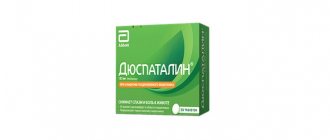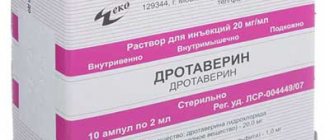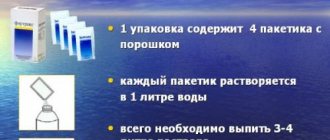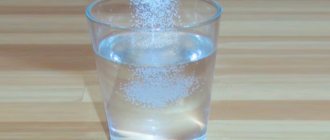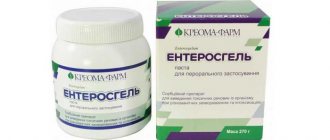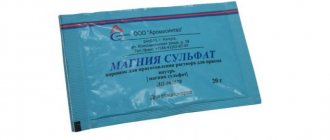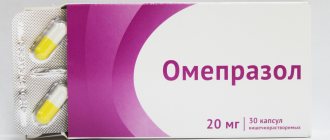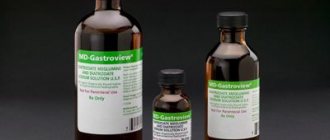Various pathogenic factors manifest themselves most actively in the bodies of children, so poisoning among them is more common than among adults. In addition, intoxication in a child is more severe and the likelihood of adverse consequences is high. The most common causes of poisoning in children are various poisons that enter their bodies in one way or another. These include:
- poisonous plants,
- expired, stale products,
- medicines,
- household and industrial chemicals.
When a toxin has entered a child’s body, one of the important methods of combating poisoning is to take a sorbent for children. These medications are also called enterosorbents because they “work” in the intestines, binding toxins and accelerating their release into the external environment.
Absorbent preparations created specifically for children have a minimum of contraindications. This is partly due to the fact that most of these drugs act only in the intestines and do not enter the general bloodstream. However, this does not mean that you can uncontrollably give your child any suitable intestinal sorbents, because each drug has its own characteristics.
When cleansing a child’s body of waste and toxins, it is important to maintain a balance:
- Prevent the accumulation of poisons and other organic debris in the cells.
- Do not overdo it with the use of sorbents for children, because this is still a medicine, and not vitamins or a nutritional supplement.
You should not decide on your own whether to give such medications to your child. The exception is cases when severe poisoning or diarrhea has occurred and you are waiting for an ambulance to arrive. If everything is not so bad, then it is better when the doctor himself prescribes this or that enterosorbent for children.
Types of sorbents and their effect on the children's body
Any sorbent - for adults or children - is a substance that absorbs toxins in the body, neutralizes them and removes them outside. The mechanism of action of these drugs is different, so they are divided into three groups:
- Absorbents that neutralize liquid toxins, turning them into solid ones, preventing them from being absorbed by the intestinal walls. Thus, the effect of the poison on the body is reduced to the maximum permissible minimum.
- Adsorbents have a branched microstructure due to which they absorb poisons like a sponge.
- Chemical absorbents react with toxins, neutralizing them.
Modern absorbent preparations not only neutralize poisons, but also temporarily force the digestive system to work more intensively, removing toxins. Their action can be compared with the functions of the liver, the work of which they relieve. This allows her to start producing substances beneficial to the body.
Sorbents help the body cope with poisoning on its own, removing toxins naturally and facilitating the functioning of the liver.
However, let’s not discount the fact that these drugs also have a negative effect, especially on the child’s body. If you give them in large quantities uncontrollably, this will lead to the removal from the body of not only poisons, but also elements necessary for normal life. For example, when children are given sorbents and vitamins or medications, the latter work less effectively.
There are also a number of diseases and internal injuries for which sorbents cannot be used by either children or adults. These include:
- stomach and/or duodenal ulcer,
- erosion of the stomach walls,
- gastritis,
- bleeding in the gastrointestinal tract,
- intestinal atony,
- mechanical damage to the esophagus and gastrointestinal tract.
Absorbent for children in such cases can seriously aggravate the situation, which can cause death.
List of the 7 best sorbents for cleansing the body with names and descriptions of the products
An acute reaction of the body to a toxic substance can lead to long-term illness, decreased performance, and even death.
Excess toxins in the body lead to deterioration of immunity and a decline in overall well-being. To help the body cope with the problem, it is necessary to use sorbents to cleanse the body.
What are sorbents?
Sorbents are substances that have special chemical properties.
Due to their structure, sorbents bind harmful compounds in order to subsequently remove them through the gastrointestinal tract.
The absorbed substance is called sorbate, and the process itself is called sorption.
Mechanism of action of sorbent drugs
Sorbents have a positive effect due to their complex effect on the internal environment of the body.
They:
- absorb harmful and potentially dangerous substances,
- tidy up the digestive processes by redistributing enzymes in the gastrointestinal tract,
- promote the movement of harmful substances from internal organs to the intestines,
- stimulate metabolism, accelerating the elimination of toxins, allergens and pathogens.
Types of sorbents
Sorbents for intestinal cleansing are divided into groups depending on the way in which the removed components are absorbed:
- Adsorbents. They collect harmful impurities on their surface.
- Absorbents . Absorb and dissolve toxins.
- Ion exchange sorbents. Ion exchangers are distinguished by their ability to exchange their own ions for ions of substances that make up the environment.
- Complexing agents . Other ions attach to the complexing ion. Coordination particles are formed.
Enterosorbents belong to the group of adsorbents. They do not participate in a chemical reaction with the substance and do not change the composition of the blood. Harmful products are fixed on the surface of the enterosorbent and are removed from the body along with it.
These adsorbents coat the inner surface of the gastrointestinal tract, softening the harmful effects of toxins.
They protect cells, disinfect and change the content of chemicals in the intestines, creating a destructive environment for pathogenic microflora.
According to their chemical structure, sorbents are divided into:
- Carbon - preparations created on the basis of activated carbon.
- Silicon -containing substances can be synthetic or of natural origin.
- Chemical - synthetic.
- Enterosorbents created on the basis of natural resins, synthetic resins and polymers, as well as non-digestible lipids. Substances of this type act through ion exchange on specific harmful substances, reduce their irritating activity and normalize the condition of the digestive tract.
- Natural . Dietary fiber of sorbents of natural organic origin is not digested by the human digestive system. They effectively absorb water and, along with it, retain carcinogenic substances, nitrites and nitrates, as well as bacterial toxins.
The most popular sorbents
Medicines must be prescribed by a qualified specialist. To correctly choose the best sorbent for cleansing the body, consult a doctor.
However, people have been familiar with the effects of sorbents since childhood. Many of them are present in the home medicine cabinet. The effectiveness of the drugs increases if you take them at the first symptoms of the disease.
Contraindications for use and possible adverse reactions
Each drug has its own list of contraindications and side effects.
Frequent contraindications are:
- gastritis,
- colitis,
- peptic ulcer,
- bleeding in the stomach and intestines,
- obstruction,
- hypersensitivity.
Many drugs remove beneficial substances, vitamins and microelements from the body.
Their long-term consumption can lead to:
- hypovitaminosis,
- food dystrophy,
- constipation and diarrhea.
Unreasonably long use of activated carbon leads to the removal of digestive enzymes from the body.
Useful tips and tricks
Sorbents should be washed down with large volumes of water . In order to reduce the toxic effects of drinking alcohol, take the sorbent half an hour before the feast.
A prophylactic course of sorbents is prescribed for up to 10 days. During the course of treatment with sorbents, take a vitamin complex in parallel.
Vitamins, like other medications, should be taken a couple of hours before or after taking the sorbent.
Sorbents for the treatment of allergies
Absorbents for cleansing the body during allergies help reduce the manifestations of the disease. They should be taken before or after meals, creating an hour or an hour and a half interval.
Taking sorbents during the active course of digestive processes in the stomach will lead to the fact that the drug will begin to remove beneficial nutrients from the body.
During treatment, you should not stop taking antihistamines.
Sorbents for poisoning
During poisoning, the body absorbs and processes a large number of harmful chemical compounds. The use of sorbents interferes with the absorption of toxins, stimulates the production of secretions and accelerates the removal of unwanted substances from the body.
During poisoning, sorbents should be taken as soon as possible in order to minimize the negative consequences for the body.
In case of poisoning, carbon absorbents are prescribed to cleanse the body. It is recommended to wash them down with plenty of non-carbonated drinks without sugar: water, green tea, fresh citrus juice.
Sorbents for weight loss
When cleansing the body in order to lose weight, sorbents should be washed down with plenty of water. Avoid consuming preservatives, alcohol, refined and heavy foods.
The medication should be taken in courses of no more than 7-10 days. Abusing sorbents for too long will disrupt the normal functioning of the gastrointestinal tract and weaken the body.
Pregnant and lactating
During pregnancy or breastfeeding, sorbents are the safest remedy against allergies or poisoning.
Absorbents for cleansing the gastrointestinal tract usually do not have pregnancy or breastfeeding on the list of contraindications. However, for the safety of the child and the nursing mother, it is better to first consult a doctor before using the medicine.
Is it possible to replace sorbents with natural products?
In no case should you replace medications with natural products in case of serious poisoning. The doctor's orders should be followed exactly.
If you have doubts about the doctor’s prescriptions or qualifications, consult another specialist.
However, some natural products can be eaten to soften the recovery period after major poisoning, for preventive purposes and during minor illness.
The functionality of the gastrointestinal tract will help to restore:
- Vegetable juices.
- Bran. Their fibrous structure effectively collects toxins.
- Rice water. It normalizes intestinal function and stool.
- Apple pulp. Cleanses the intestines.
Conclusion
There are no best sorbents for cleansing the body that are equally effective in any situation. Each drug has its own purpose and side effects.
To find the right medicine and dosage, consult a specialist. In the event of a serious health problem, the correct effect of sorbents can only be achieved during complex treatment.
(3 5,00 of 5) Loading...
Source: https://xn--90acxpqg.xn--p1ai/ochishhenie-organizma/absorbentyi-dlya-ochishheniya-organizma-pri-allergii-otravlenii-ili-dlya-pohudeniya
How to choose suitable sorbents for children
Children are given sorbents for various reasons:
- in case of poisoning,
- due to an allergic reaction to something,
- for disorders of the digestive system.
Pharmacy shelves are lined with similar drugs in various forms. And to make the right choice, you should first consider the age of your child. Although sorbents for children have minimal contraindications, these drugs have various side effects, which is why it is so important to select them according to how old the child is.
Most often, doctors prescribe one of four well-known drugs:
- Smecta,
- Polysorb,
- Enterosgel,
- Polyphepan.
Another important factor for choosing one or another enterosorbent is the clinical picture of the disease. When a child suffers from prolonged diarrhea that does not go away within four hours, it is best to give him Smecta. This drug coats the intestinal walls and relieves irritation.
If the poisoning was caused by other medications, then the most correct solution would be to give the baby Polysorb or Enterosgel. However, when taking them, it is important to adhere to the main rule: you need to drink a lot.
- Firstly, so that toxins bound by sorbents are quickly removed from the body.
- Secondly, with vomiting and diarrhea, dehydration occurs, which absorbents only intensify.
And now it’s worth taking a closer look at popular and effective sorbents for children.
Contraindications
The following ailments are prohibited from use:
- Individual intolerance.
- Intestinal obstruction.
- Bleeding in the stomach or intestines.
- Violation of the evacuation function of the intestines, which manifests itself as constipation.
- Bloating.
- Flatulence.
- Pain in the abdomen.
- Exacerbation of ulcers.
- Oncology.
- Severe vomiting.
If the patient has a history of conditions from the list of indications, cleansing the body with Polysorb (according to the instructions) will also become a therapy. Especially often, grateful users note its increased effectiveness against allergic reactions. By eliminating allergens, it eliminates rashes and other signs of this disease, that is, it has an antihistamine effect.
Pregnant women, with the permission of their doctor, can use the powder to eliminate toxicosis and at the same time cleanse the intestines and amniotic fluid.
It is equally important to observe the prohibitions on use. If you do not take them into account, instead of cleansing, you can get an exacerbation of existing ailments, a deterioration in well-being, and even negative phenomena.
If a person is not sure about the need to cleanse the body, it is better to seek advice from a gastroenterologist or simply a therapist. Although the drug is available without a prescription, it must be prescribed by a medical specialist.
Smecta
This is the most well-known remedy, compared to its analogues. It is often given when a child suffers from prolonged diarrhea. Although Smecta does not lead in absorption properties, it is enough to save a child from mild and moderate intoxication.
In addition to the absorbing properties inherent in all sorbents, Smecta also has an enveloping function. If you need to relieve intestinal irritation, this drug is just right; by enveloping the internal mucous membranes, Smecta prevents poisons from being absorbed into the blood, therefore, the poisoning is not aggravated, and toxins are eliminated.
Polysorb
The active substance of this drug is silicon dioxide, which is recognized as an effective sorbent. Polysorb has a number of advantages over similar medications:
- high degree of adsorption,
- minimal negative impact on the digestive system,
- a unique mechanism of action consisting in enveloping particles of toxins, after which the body simply does not perceive them and calmly removes them.
Polysorb is in the form of a powder in a special package, the capacity of which is designed for one-time use. Take the drug, like Smecta, diluting it in a glass of water. This achieves two goals:
- minimize dehydration,
- the medicine works better.
The dosage is calculated based on the child’s weight.
How to take the drug during pregnancy?
Women in an interesting situation can use Polysorb calmly, since the drug does not have a detrimental effect on the health of the expectant mother and baby.
Only when taking enterosorbent for more than two weeks is it necessary to additionally use multivitamins and calcium, since the sorbent removes important nutrients. It is not recommended to use Polysorb for pregnant women for too long. Occasionally, they can use the drug to eliminate poisoning, food and intestinal diseases, and allergies.
The dosage for women in an interesting position is exactly the same as for all other people. Separately, it is worth noting the use of “Polysorb” by pregnant women to eliminate gestosis and toxicosis and for preventive purposes.

To eliminate gestosis and toxicosis, women need to take the drug in a dosage of three grams three times a day. The duration of therapy is two weeks.
After treating toxicosis, you can take Polysorb three weeks later to prevent the recurrence of such complications.
Enterosgel
This is a very well-known absorbent for children and adults, which has shown its high effectiveness in the fight against even very serious toxins. The main active ingredient in it is methyl silicic acid. Enterosgel differs from other similar medications in its selective action. And children are allowed to give it, because it does not affect the digestive system in any way. There is one caveat - the absorption capacity of Enterosgel is two times weaker than that of Polysorb, therefore, it must be given twice as much.
The next strong characteristic of Enterosgel is its release form - gel. That is, it is already ready for use, without requiring any additional actions.
There are no age restrictions for this drug. However, you should not take it for more than two weeks. If severe poisoning has occurred, the doctor may decide to prescribe a large dosage of the medicine at first, gradually reducing it.
It is worth remembering that, as when taking any other sorbent, when using Enterosgel, you need to drink plenty of water to prevent dehydration. It is also capable of neutralizing the effect of other drugs, which must also be taken into account.
What is the drug?
"Polysorb" is considered a new generation universal adsorbent. The sorption capacity is several times greater than that of analogues. The active ingredient is colloidal silicon dioxide. There are no auxiliary substances in the composition.
"Polysorb" is a white, slightly gray or blue-tinged powder without aroma.
The drug is intended for detoxification in cases of poisoning of various origins. In addition, its ability to remove up to ninety-five percent of harmful substances is often used to cleanse the body and lose weight.
The medicine is sold from pharmacies in sachets of three grams (there are ten in total in the package), as well as plastic jars (twelve, twenty-five, thirty-five, fifty grams). Can be purchased at pharmacies without a prescription. How to take Polysorb to cleanse the body?
Polyphepan
The main active ingredient of this medicine is lignin. The strength of Polyphepan is its natural origin, which minimizes the number of side effects. It is sold in the form of a paste and capsules, from which a suspension is made, ready for administration.
Polyphepan does not have strong absorption ability and should not be used for more than one week. Unless, if the poisoning is severe enough, the doctor may decide to extend the dose for a maximum of another 7-10 days.
If Polyphepan is given to infants, the child’s condition must be carefully monitored, since this drug can cause constipation and heaviness in the baby’s tummy. Although, if we talk about infants, this is a special group of patients, especially sensitive to any drug. Therefore, there are safer sorbents for them, but they are more expensive.
Filtrum-Sti
It is available in the form of tablets and is recommended by specialists for the relief of any form of intoxication. Its main active substance is also lignin.
- Filtrum-Sti is not absorbed into the blood and does not affect the body as a whole through the circulatory system.
- Within 24 hours, this medicine is cleared from the intestines, which is very important when treating children.
- Another strength of the drug is its 100% hypoallergenicity, which makes it suitable even for infants.
The components of Filtrum-Sti are safe for babies, do not negatively affect their condition and do not affect the development of organs. You cannot mix this sorbent with other medications, as it neutralizes their beneficial effects.
When acute poisoning occurs, this medicine is given until complete recovery. Typically, the duration of treatment lasts no more than ten days. Only a doctor can decide whether it is worth continuing to give the child this sorbent after this period. Because long-term use of Filtrum-Sti leads to hypovitaminosis, as the absorption capacity of the digestive system is impaired.
Activated carbon is the king in popularity
There is no point in presenting this enterosorbent for a long time. It is difficult to even say from what period humanity began to use it in the fight against poisoning. Compared to the above drugs, activated carbon has the lowest absorption capacity.
Activated carbon should not be given to small children or infants, because its solid particles can damage the delicate walls of the intestines and stomach.
Older children, from 7-9 years old, can be given activated carbon. However, this should be a single dose aimed at combating diarrhea or poisoning.
The main disadvantage of this drug is that it removes from the body everything that gets in its way - both toxins and beneficial substances. Therefore, no one, neither children nor adults, should take it regularly. Activated carbon is also contraindicated if you have chronic inflammatory diseases of the stomach and intestines.
Conclusion
Sorbents for children will do good if they are used in a balanced manner. It is worthwhile to “prescribe” this or that drug to your child in exceptional cases in severely aggravated conditions, when you are waiting for an ambulance.
The pharmacological industry is replete with new names, but the most popular remain Smecta, activated carbon, Polysorb, Enterosgel and Polyphepan. One of the best options for gentle digestion of infants is Filtrum-Sti.
But even if you have information about sorbents for children, you cannot decide on your own what and how much to give your child. Knowing the instructions is not a medical education, so you should always seek the advice of a doctor.
medtox.net
How to use Polysorb MP for children
One of the most effective enterosorbents for children is Polysorb MP. This is a Russian-made drug; its unique formula has no analogues. The main active ingredient is highly dispersed silicon dioxide.
The advantages of using Polysorb for children are as follows.
- The drug has a high adsorption capacity. It forms about 300 square meters of active-absorbing surface per 1 gram of powder. The surface area of the human intestinal mucosa is about 200 square meters.
- A unique sorption mechanism: fine particles of the drug surround the toxin on all sides, completely isolating its effect on the body even before it is removed from the gastrointestinal tract. This property of Polysorb is most important in cases of food allergies.
- Does not affect intestinal motor function - peristalsis.
The powder is available in bags for single use and in a plastic jar. Before use, it must be diluted in a small amount of water to obtain a suspension. Doses for children per dose:
- for a child weighing up to 10 kg - 0.5–1.5 teaspoons (daily dose);
- 10–20 kg - 1 teaspoon;
- 20–30 kg - 1.5 teaspoon;
- 30–40 kg - 2 teaspoons;
- 40-60 kg - 1-1.5 tablespoons.
"Polysorb MP" is taken 3-4 times a day for 3-5 days.
Side effects (rarely) include allergic reactions and constipation.
Enterosgel for children
Another effective and safe sorbent that is suitable for children with poisoning is the drug “Enterosgel”. It is an organosilicon substance called polymethylsiloxane polyhydrate. Enterosgel has selective adsorption, does not affect intestinal motility and has a large working surface (150 square meters per 1 gram). One of the advantages over other sorbents is a convenient dosage form in the form of a gel.
Enterosgel is used for children without age restrictions.
- Dose for infants: 2.5 grams (½ teaspoon), divided into 6 doses.
- Children under 5 years old: 22.5 grams in three doses (½ tablespoon each);
- Children from 5 to 14 years old: 15 grams in three doses (1 tablespoon each).
Smecta for children
"Smecta" is an excellent antidiarrheal drug for children. The active substance is a natural mineral - diosmectite. Analogues of "Smecta":
- "Neosmectin" (powder and suspension);
- "Diosmectite."
“Smecta” has good sorption qualities (100 square meters per 1 gram of substance) and has virtually no contraindications. The main advantage is that in addition to adsorbing properties, it also has an enveloping effect. By stabilizing the intestinal mucous barrier, diosmectite prevents irritation of the mucous membrane and protects it from the harmful effects of bacteria and toxins.
"Smecta" in children is used for poisoning with severe diarrhea (diarrhea). Doses for use:
- up to one year of age - 1 sachet per day for 6 doses;
- children 1-2 years old - 1-2 sachets;
- children over 2 years old - 2-3 sachets per day.
An overdose of this sorbent can lead to constipation.
Polyphepan for children
"Polyphepan" is available in the form of powder, granules and tablets. This medicine has analogues:
- "Filter";
- "Lactofiltrum".
The active ingredient is a natural polymer of plant origin, lignin. It does not have very high sorption properties - the active surface area is 16–20 square meters per 1 gram. But Polyphepan is cheaper than other enterosorbents.
Doses for children per dose:
- for infants - ½–1 teaspoon;
- children from 1 to 7 years old - 1.5 teaspoons;
- from 7 years - 1 tablespoon.
"Polifepan" is taken 3-4 times a day for 3-5 days. For chronic intoxications and allergic diseases, the course of treatment is extended to 2 weeks. If prescribed to children in the first year of life, caution should be exercised - the drug can cause constipation and heaviness in the stomach.
Is it possible to give activated charcoal to children?
Activated carbon for children is used as a one-time measure. It is given at the rate of 1 tablet per 5 kg of child’s weight. Before use, the tablets must be crushed into powder and diluted in a small amount of water (a suspension is formed).
Of all the listed sorbents, activated carbon has the lowest adsorption capacity. It does not have a selective effect and removes not only toxins, but also nutrients from the intestines. It is also not the best sorbent for infants, since solid coal particles injure the intestinal wall. Activated charcoal should not be given for chronic inflammatory diseases of the stomach and intestines.
The advantage of activated carbon is its low cost and universal adsorption.
Adsorbents for children are used as part of complex treatment for poisoning, allergic diseases, and digestive disorders. Most of them have no other contraindications other than individual intolerance and intestinal atony.
For young children, a daily dose of enterosorbent is given in 5-6 doses, diluting the powder immediately before use. It is also taken into account that a break of at least one hour must be observed between giving other medications and taking the intestinal sorbent.
Sorbents are selected depending on clinical signs: in case of severe diarrhea, it is better to give Smecta, since it has an additional enveloping effect and protects the intestinal wall from irritation. If a child has been poisoned by any potent substance, for example, medications, then it is better to give him a drug with high adsorbing capacity - Polysorb MP or Enterosgel. Infants are given any medicine only after consultation with a pediatrician. In addition, when you have diarrhea, it is important to remember that dehydration and loss of electrolytes occur. To replenish the balance in the body, you need to drink plenty of fluids and take rehydration medications.
otravleniy.com
Side effects
No one is immune from negative effects if used incorrectly. In many ways, their appearance is facilitated by both overdose and ignoring contraindications. In addition, non-compliance with instructions and lack of supervision by a medical specialist play an important role. But it happens that the patient’s body may react poorly to the medicine. As a rule, the following adverse reactions occur:
- Allergic reactions.
- Anemia.
- Headache.
- Dyspepsia.
- Frequent belching.
- Abdominal distension.
- Unpleasant taste in the mouth.
- Intestinal atony.
- Impaired absorption of calcium and vitamins.
- Metabolic disorder.
- Dehydration.
- General weakness.
- Weakening of the immune system.
- Swelling.
- Digestive disorders.
- Suppression of brain activity.
- Persistent constipation.
- Dry mucous membranes.
You should not be afraid of this list of negative reactions, since most of them can be prevented:
- To prevent allergies, it is necessary to start a course of Polysorb with small dosages and carefully monitor the condition of the body, as well as use antihistamines.
- To prevent anemia, you should include as many foods containing iron in your diet as possible.
- For preventive purposes, to prevent vitamin deficiencies, you should eat fresh fruits and vegetables, and you should also take a multivitamin.
It is much more difficult to cope with intestinal diseases. In this situation, you will either have to consult a gastroenterologist, or abandon this method of cleansing.
As for intestinal obstruction, it most often appears after the course is completed. To alleviate the condition, it is necessary to take a gentle laxative.
"Polysorb" is considered a modern development, and it copes well with the tasks assigned to it. When taken correctly and continuously, it performs a complete “spring cleaning” inside the body and will help improve the functioning of all organs.
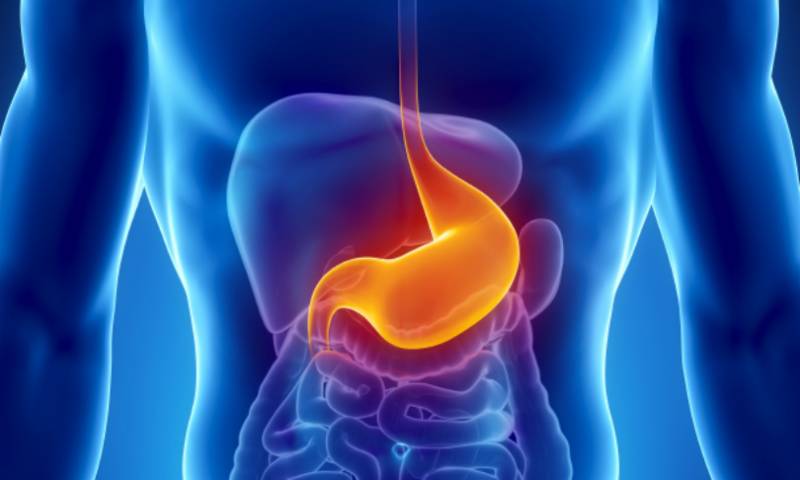
Comparative characteristics of polysorb and smecta
| Polysorb | Smecta | |
| Active substance | Silicon dioxide colloidal | Main: dioctahedral smectite, Auxiliary: flavorings, dextrose, sodium saccharinate |
| Pharmacological group | Sorbent | Sorbent |
| Release form | White powder for preparing a suspension. Diluted with water | Blueish powder for preparing a suspension. |
| In what cases is it used? | Various types of allergies, diarrhea, food poisoning, various intestinal infections. It is also prescribed for viral hepatitis. To cleanse the body, as well as remove the effects of alcohol intoxication. For vomiting and nausea General cleansing of the body from toxins | Various forms of diarrhea, heartburn, bloating As part of complex treatment for intestinal infections. General cleansing of the body from toxins |
| Effect on the stomach | Does not injure the walls | Does not injure the walls |
| Side effects | In very rare cases - constipation, the drug is usually well tolerated | Severe constipation is possible with prolonged use. In practice, in very rare cases, allergic reactions, nausea |
| Contraindications | Stomach and duodenal ulcers, bleeding in the gastrointestinal tract, drug intolerance, intestinal atony. In case of long-term use, it can remove calcium and vitamins from the body. | Individual intolerance to the components of the drug, poor intestinal permeability, fructose intolerance. Use with caution in people with problems such as chronic constipation. |
| Terms of purchase | Over the counter | Over the counter |
| Duration of treatment | Depending on the pathology, it can last 3-5 days, or can be carried out in courses of up to 2 weeks with breaks. | From 3 to 5 days |
| Interaction with other drugs | Possibly without fear | Not recommended, as the medicine can affect the speed and extent of action of other drugs. In case of emergency, the break between taking smecta and another drug should be 1-2 hours |
| Excretion from the body | Fully displayed | Completely eliminated from the body |
| Duration of use | Long-term use is possible with breaks of at least 2 weeks | Long-term use is possible with breaks of at least 2 weeks |
| Degree of toxicity | Non-toxic, but you must remember that the powder cannot be taken dry, you must always dilute it with drinking water | Non-toxic. It should also not be taken dry. |
| To whom can it be assigned? | Approved for use by people of any age, including newborns, pregnant and lactating women | Approved for use by people of any age, including newborns. Pregnant and lactating women without additional adjustment. |
| Price | Available | Available |
List of enterosorbents and features of their administration
Enterosorbents are substances of a chemical or plant nature that are capable of binding and removing from the body toxic substances of exogenous (come from outside) and endogenous (produced by the body) origin. They are taken orally; a chemical interaction occurs in the intestines between the sorbent and the toxin.
Types of enterosorbents
Based on the main active ingredient, enterosorbents are divided into 3 groups: organic origin, carbon and silicon. All drugs, regardless of their chemical structure, have common properties: they do not enter the circulatory system and are excreted from the intestines naturally unchanged.
- Organic - made from plant fiber, chitin, cellulose or pectin, clay. The raw materials for production are terrestrial plants, seaweed, and crustaceans. Natural components are practically not processed; their natural properties are used to the maximum. There are few pharmaceutical preparations of this composition available; manufacturers prefer to position them as dietary supplements. There is some danger in this, since dietary supplements are not medicines and do not undergo any clinical trials. The effect depends solely on the integrity of the producers.
- Carbon - the oldest group, the main representative is activated carbon. Has high surface activity and sorption capacity. It can not only bind toxic substances, but also reduce their absorption in the intestine. Reduces the formation of intestinal gases. Absolutely harmless, allergic reactions are unknown. The substance has been used for medicinal purposes for over 200 years. The raw materials are trees, coconut shells, coal and other materials.
- Silicon - silicon dioxide is used as the main active ingredient. Rocks and the crust of the globe are made of this substance. The raw material is quartz sand, which is treated with acid to increase porosity. In addition to making medicines, it is used in the production of toothpaste, as a flour baking powder, in the production of cheese, chips, and many confectionery products. In this case it is designated as additive E551.
The choice of drug depends on the severity of the condition. Silicon-based sorbents have the maximum cleaning ability, followed by activated carbon, and organic substances close the list. This does not mean that drugs cannot replace each other.
You just need to choose the right dosage to achieve the same effect. The required amount of sorbent is selected based on body weight; all ratios are indicated in the manufacturer’s instructions. If you follow the instructions exactly, you will get the expected effect.
List of drugs
It is better to consult your doctor about choosing a drug.
Organic sorbents
- Polyphepane is a powder containing hydrolytic lignin, dark brown in color, insoluble in water, in bags or jars. Made from wood or seaweed. On its surface it absorbs not only microbes and their toxins, but also various allergens and alcohol, poisons and heavy metals, as well as products of natural metabolism - cholesterol, urea. It is eliminated from the body within 24 hours. Used in the treatment of poisoning, in conditions of renal and liver failure, for dyspepsia and allergies.
- Filtrum-sti - contains the same hydrolytic lignin, available in tablets. Indications for use are similar.
- Lactofiltrum - contains hydrolyzed lignin and lactulose, release form - tablets. Lactulose is an artificially created mixture of natural sugars: fructose and galactose. Under natural conditions, lactulose is produced by the mucous membrane of the large intestine. In the intestinal lumen, lactulose breaks down into organic acids - acetic, formic and lactic, which inhibit the growth of pathogenic microbes. Also, these acids tend to stimulate peristalsis. The complex action of Lactofiltrum leads to the fact that the intestines are quickly freed from toxins.
- Smecta – made from modified medical clay. It has a discoid-crystalline structure, thanks to which it absorbs bacteria and viruses, and also increases the amount and changes the properties of intestinal mucus. The effect is most pronounced in diarrhea caused by infectious or toxic agents.
Carbon
- Activated carbon is a substance that consists of almost nothing but pores. If you expand all the pores that fit in one square centimeter, you get from 500 to 2000 square meters. The inner layers of coal are displaced relative to each other, and these active pores are placed between them. To obtain this structure, ordinary charcoal is fired in a closed container without oxygen. To achieve the opening of all pores, hot water steam is passed through. The medicine obtained in this way reliably helps with all types of poisoning.
- Carbopect is the same activated carbon, produced in 110 mg capsules.
- Sorbex – activated carbon in capsules of 250 mg.
Silicon
- Polysorb - contains colloidal silicon dioxide or ground silica. The size of one particle can reach 9.09 mm, the chemical formula is SiO2. The drug has sorbing and detoxifying (disinfecting) properties. Binds and removes all substances of bacterial, toxic and chemical origin - alcohol, alkaloids, heavy metal salts, allergens, bilirubin, uric acid, drugs, etc. Before each dose, prepare a fresh aqueous suspension from the powder by mixing the powder with water in the proportions specified in the instructions.
- Atoxyl - created on the basis of silicon dioxide, powder, available in bottles of 12 g. Before use, fill the bottle with water to the mark and shake. The resulting suspension is used orally. Age dosages are indicated in the instructions. Atoxil absorbs all substances found in the intestines. One of the drugs that acts as quickly as possible.
- White coal is a dietary supplement, not a medicine, but it is sold through the pharmacy chain. Contains silicon dioxide and cellulose, color comes from high starch content. The exact ratio of parts and pharmacodynamics are unknown.
Indications for use
Conditions in which toxins of external and endogenous origin are present in the intestinal lumen:
- food poisoning;
- acute intestinal infections;
- purulent-septic diseases in which intoxication is pronounced;
- excessive alcohol consumption;
- drug overdose;
- jaundice due to viral and other hepatitis, accompanied by an increase in bilirubin levels;
- chronic renal failure;
- inflammatory diseases of the digestive system;
- allergy;
- autoimmune conditions - rheumatism, bronchial asthma, psoriasis and others.
Enterosorbents are used only to remove toxins from the intestinal lumen. Trying to improve with them those conditions in which autoimmune complexes circulate in the blood - for example, multiple sclerosis - is pointless.
Are there any contraindications?
There are, and these are conditions in which the intestinal mucosa or the integrity of blood vessels is damaged:
- exacerbation of gastric or duodenal ulcer;
- bleeding from any part of the digestive canal;
- impaired intestinal motor function or atony, when it is known that the sorbent cannot be excreted naturally;
- individual intolerance, which occurs in occasional cases;
- during pregnancy, sorbents are prescribed exclusively by a doctor;
- Some drugs are not indicated for children under 3 years of age.
Is it possible to take enterosorbents for prevention?
It is possible, but subject to some restrictions.
Sorbents can be used as a prophylactic agent for workers in hazardous working conditions. However, in such industries medical control is required, and the course of treatment cannot exceed two weeks. Longer use leads to loss of nutrients and worsens overall health.
It is possible to take sorbents prophylactically for seasonal allergies - for example, during the flowering period of plants. It is better to discuss this technique with your doctor.
You need to understand that the sorbent absorbs all substances in the intestines. The break between food, medication and sorbent should not be less than 1 hour, or better - two.
Source: https://ProKishechnik.info/preparaty/enterosorbenty.html
What else you should know about sorbents
Smecta is quite easily accepted by the body, although many patients note an unpleasant aftertaste of the medicine. You need to drink it diluted in small sips to avoid the appearance of gag reflexes . Minor side effects are rare with this drug.
In the case of smecta, we must not forget that the break between taking this drug and other medications should be at least 1 hour.
There is currently no information about whether this drug can affect the ability to drive vehicles.
This drug should be stored at a temperature not exceeding 25 degrees and out of the reach of children. When sealed, the shelf life is 3 years.
Polysorb has a very wide spectrum of action. It is significantly larger than that of smecta. This medicine is able to very actively bind toxic substances in the body and quickly remove them .
The sorption capacity of polysorb is 3 times higher than that of its analogues.
It is able to remove the effects of intoxication of any kind, so it is often prescribed as part of a complex treatment for many diseases. Polysorb has two main and very important properties:
- Absorbs harmful substances (aggressive proteins, poisons, radionuclides, heavy metals, drugs, alcohol, etc.)
- Removes intoxication.
The drug removes not only toxins, but also unnecessary breakdown products formed during metabolism. The use of Polysorb ensures that during treatment the volume of other prescribed medications can be significantly reduced. Doctors often prescribe it for colds. It helps reduce body temperature and significantly improve the patient's general condition without additional use of antipyretic medications. Polysorb is also successfully used in the treatment of skin diseases: various dermatitis, eczema.
However, Polysorb has a drawback: with long-term use it can cause a deficiency of calcium and vitamins, therefore, as prescribed by a doctor, you need to take a complex of vitamins.
As a result of strong cleansing of the body with the help of this product, the condition of the skin significantly improves. Some patients note a slight unpleasant aftertaste from the suspension, but this is more than offset by its therapeutic effect. Polysorb does not affect the ability to drive vehicles.
Using polysorb and smecta at the same time is extremely undesirable.
Sometimes the drug of choice becomes filtrum. Polysorb or Filterumsti - the solution to this issue should be left to the treating doctor, since each of the drugs is prescribed for certain indications.
It must be remembered that the suspension of both Polysorb and Smecta must be prepared for a single dose; you should not dilute too much powder. Both drugs do not require any special storage conditions.
In an emergency, you can take one dose of any of these medicines immediately according to the instructions, but further treatment should be under the supervision of a doctor. The dosage should be determined only by a specialist, based on the available tests and the general condition of the patient. He will also determine the duration of the course of treatment. Self-medication may not only not help, but also lead to serious consequences.
otravlenye.ru
Silicon dioxide based sorbents
Sorbent based on silicon dioxide (SiO2) is often used by official medicine. The group's drugs are designed to bind various toxic substances and remove them from the body.
They are used for poisoning, including alcohol, drugs, medications, various types of infections accompanied by disorders of the gastrointestinal tract, immune-related pathologies, allergies, etc.
What are sorbents
Science defines sorbents as chemical compounds that are capable of absorbing gases, vapors and other substances. The operating principle is different:
- binding toxins, they form a solution;
- enter into a chemical reaction with harmful substances, neutralizing them;
- make absorbed substances thicker and accumulate them on their porous surface.
Enterosorbents have been used by humans for a long time: in Ancient Egypt and Greece, doctors prescribed charcoal preparations externally and internally; in Rus', healers especially valued birch charcoal, which actively adsorbs water. In the 20th century, soldiers of the German army, the Soviet military, and later the victims of the Chernobyl disaster were treated with lignin.
Absorbing drugs are used in monotherapy or in complex treatment together with other medications. They are prescribed as a prophylactic against coronary disease and atherosclerosis.
The most accessible sorbents are based on activated carbon, which is obtained from coal and wood.
The second group is preparations based on lignin; it is produced from wood in which decomposition processes have begun, treating it with special chemicals.
The third group - smectites, are based on medicinal clay, and the fourth group includes products containing silicon (silica).
These are the most effective and safe medications available in paste, gel or white powder form.
Their molecules bind toxins, bacteria, which are several times larger in size, and remove them and metabolic products of microorganisms and parasites from the body.
The main criterion for comparing sorbents is the active sorption area
When selecting a drug for a patient, the doctor must choose the most effective sorbent with minimal side effects.
The following properties of medications are taken into account:
- the ability to absorb elements that differ in chemical structure, size, mass;
- capacity - the amount of substances that can be removed by a sorbent molecule per unit of its mass;
- active sorption area (equal to the area of the external sorbent molecule).
The general toxicity of the drugs, their compatibility with body tissues and the degree of trauma to the mucous membranes of the digestive system are taken into account.
The sorption capacity of silicon dioxide is the largest among analogues - 300 mg/g, that is, a small amount of the substance can remove a maximum of toxins, allergens, bacteria, viruses, and heavy metal salts.
The medication itself is not absorbed by the body and is not broken down, it is completely eliminated naturally, and therefore is safe for pregnant and nursing mothers, newborns, and the elderly.
There are two types of such drugs on the market:
- Colloidal silica (“Polysorb”) has pronounced sorption properties and a wide spectrum of action.
- Methyl silicic acid hydrogel - capacity is 105-150 mg/g.
For comparison: smectite pore surfaces can remove even less toxic substances - 100 mg/g, lignin - 18 mg/g, activated carbon - only 5 mg/g.
But the availability of activated carbon makes it an indispensable drug, despite such disadvantages as: the need for large doses (1 tablet per 10 kg of weight), the possibility of desorption, side effects with long-term use.
Silicon dioxide sorbent
Silica (silicon dioxide) is a colorless, odorless, solid crystal.
Precipitated silicic acids in various forms are used in many industries - food, pharmaceutical, construction, radio engineering.
One precipitated silicon oxide is used as a filler in the manufacture of resins, sealants, paper, and defoamers; the other is used as an anti-caking agent.
The colloidal form of the substance is used in medicine as a medicine: an enterosorbent that can remove large amounts of toxins from the body, and an external remedy for purulent-inflammatory diseases of the skin and soft tissues.
Method of obtaining sorbent
In industrial production, SiO2 is obtained in the form of quartz concentrate, for which the rock is mined, crushed, sifted, and purified.
Silica is also obtained from sodium silicate artificially, for which the required amount of acid is added to a beaker as an oxidizing agent or treated with oxygen at high temperatures. To speed up the reaction, you can use a large stir bar and stir the contents.
Silicon dioxide is produced by coagulation of colloidal silica under the influence of ions, hydrolysis, and chemical precipitation. It is impossible to obtain sorbent at home.
How to use the drug
It is necessary to take sorbents only as prescribed by a doctor and if necessary. Indications for use may include intestinal infections, food and chemical poisoning, exogenous and endogenous intoxications, allergies, purulent-inflammatory diseases of soft tissues, hangover syndrome.
Directions for use: mix the required amount of the drug in water and drink. Take the medicine 2 hours before or after eating or taking other medications (so that the sorbent does not absorb beneficial substances from food or medicine).
Silicon dioxide is well tolerated by most people and is approved for use by pregnant women and children from birth. But the substance also has side properties - it can cause constipation (especially with long-term use), dyspepsia, and an allergic reaction.
If treatment lasts more than 2 weeks, there is a deterioration in the absorption of vitamins and minerals, in particular calcium.
Knowing these properties of drugs with silica, they are prescribed for a period of up to 14 days, and after the course, prophylactic intake of vitamins is recommended.
Pulmonologist, Therapist, Cardiologist, Functional Diagnostics Doctor. Doctor of the highest category. Work experience: 9 years. Graduated from Khabarovsk State Medical Institute, clinical residency in therapy. I am engaged in the diagnosis, treatment and prevention of diseases of internal organs, and also conduct medical examinations. I treat diseases of the respiratory system, gastrointestinal tract, and cardiovascular system. Bespalova Irina Leonidovna published articles: 432
Source: https://ObOtravlenii.ru/lekarstva/sorbent-na-osnove-dioksida-kremniya.html
Evolution of sorbents
The essence of taking sorbents is clear: each powder, gel or compressed piece absorbs the contents of the stomach and intestines, binds and does not allow the body to absorb dangerous substances. The most important thing is that a good sorbent can effectively bind poisons, toxins, and fermentation products without removing valuable and useful compounds from the body.
It seems that this is almost impossible, but in reality everything is simpler: for most toxins and poisonous compounds, the molecular sizes differ from the dimensions of amino acids and vitamins, so even such simple sorbents as activated carbon do not completely bind useful elements. Alas, it binds much less harmful substances than necessary. However, with each generation, sorbents become more and more effective.
For example, Smecta was one of the first drugs that bind rotavirus, as well as accompanying decay products. During diarrhea, the sorbent allows you to retain most of the electrolytes in the body, while removing all toxins with feces. And of course, the more universal the sorbent, the more problems it solves at once.
Indications
Despite all its positive aspects, Polysorb is still considered a full-fledged medicine, and it is not recommended to ignore this information.
The drug is usually prescribed for the following conditions and diseases:
- Alcohol poisoning.
- Allergies.
- Viruses.
- Harmful working conditions associated with the chemical industry.
- Hepatitis (inflammatory liver diseases, usually of viral origin).
- Purulent diseases.
- Dermatitis.
- Diarrhea.
- Dysbacteriosis (a condition caused by a violation of the intestinal microflora associated with a change in the species composition of bacteria).
- Long-term antibiotic therapy.
- Infections.
- Disturbances in the functioning of the stomach and intestines.
- Weakened immunity.
- Drug poisoning.
- Liver failure.
- Food intoxication.
- Hangover.
- Kidney failure.
- Living in environmentally unfavorable areas.
- Psoriasis (a chronic non-infectious disease, dermatosis, mainly affecting the skin).
- Toxicosis (a painful condition of a person in which the body is exposed to exogenous toxins or various harmful substances).
- Eczema.
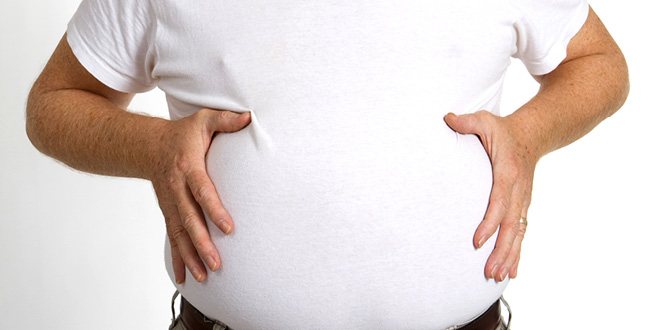
Difference between two sorbents
Having dealt with the general tasks, you can begin to look at the differences, because if different drugs are produced, then this makes sense. And it is incredibly simple: Smecta helps with poisoning and diarrhea, and also has a relatively pleasant taste, even a baby can happily drink the medicine diluted in milk formula or water. The effect occurs quickly, especially if the problem arose as a result of poisoning. The drug is generally safe, but can cause constipation if taken for a long time. Also, Smecta should not be given without consulting a pediatrician and it is better to select dosages with the help of a doctor.
Polysorb will also be effective for diarrhea caused by rotavirus, for poisoning and indigestion, for overeating, and for allergic reactions. Since it belongs to a later generation of sorbents, its action is even more selective, and the dosages are more thoughtful. A newborn will tolerate Polysorb treatment well in almost any situation. The dosage, which correlates with weight, is calculated in both grams and volume, which is most convenient for treating children.
What to choose?
Each manufacturer praises its own product, so the question of choice remains relevant. Smecta or Polysorb - which is better is still to be determined by the doctor. For emergency situations, it is better to have at least one of the drugs on hand, one that is not contraindicated for family members.
And it’s better to stock up on sorbent in advance - having Polysorb, Smecta or any other anti-diarrhea powder in your first aid kit, you can be sure that diarrhea will not have time to harm the body, regardless of what ultimately caused it. And of course, you should definitely consult a doctor if your child has diarrhea.
sorbent.info
